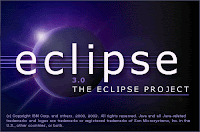
Thought this is sort of a tabu matter, no software developer or webmaster likes to wonder about what will happen when they are no longer around to assure the survival of their legacy works.
Unfortunately, I'm already forced to think about these matters due to certain attributes and choices of my life that might shorten my available time span to take care of them.
Over the years, I've done software and helped raising websites with people that now depend on my direct support to keep things going on daily basis.
Every now and then a new situation appears that needs to be solved. Today one of the subdomains was reported as hosting a malicious page, meaning that someone from the outside managed to break our perimeter defenses and use our server for their malicious purposes.
Our server was automatically shutdown by the hosting provider until I could talk with them and remove the malicious page.
I love keeping things tidy and running well but I'm certain that when I'm no longer around to assure this type of service, few other guys will be available or willing to carry forward the needed support to provide the things that we achieved over the years.
It would be unfair to so many that trusted in us as guardians of their knowledge to fail in this task. Websites like boot-land.net and projects for winbuilder deserve to endure long after the initial authors and patricians are long gone.
My own memories, hosted at nunobrito.eu are also depending on my own administration to be available.
This is clearly a solution that cannot last for centuries to come. One idea would be moving to the platform of a bigger provider like google, yahoo, microsoft, flickr or facebook.
But none of them work will likely work like we need. Anything hosted on their platforms is outside our own management and can be lost at any given moment.
How to solve this?Thought a complete automation and debugging of issues that occur is never possible to achieve, it is possible to prepare the path and mechanisms to allow others to follow our steps and also ensure that this process is simple to keep things moving.
--------------------
The first worries are costs that are divided between hosting costs and domain renewals.
To support these costs, the publicity gathered from the bigger sites is currently enough to keep the site self-sufficient. Revenue from publicity is directly deposited on a specific paypal account and is driven from two separate advertising channels to ensure redundancy.
The first step to solve the matter of domain renewal is concentrating all domains on the same registrar (I've chosen godaddy as they are the leading provider of this service). This is not as simple as it seems, the most important domains such as winbuilder.net and boot-land.net are hosted on dominios.pt that are aggressive about domain transfers. Will try to solve this.
The second step is automating the renewal process. Currently, as paypal is the standard web payment tool, I can automate the automatic withdraw of funds to keep registrars happy.
Once the domain renewals are solved I will focus on the hosting plans. Currently we have two servers. One of them is directly sponsored by R1Soft. Unfortunately I'm unable to get in contact with them to transfer the sponsoring to the second server that has far better conditions than the first.
At the current state we are having a server that is expensive (110 USD/month) and barely used along with the new server that costs around 140 USD/month.
The most problematic situation is the new server. 140 USD/month cannot be payed from paypal. This bill needs to be settled with a credit card or direct bank transfer from an account located in Germany. The problem is that credit cards have a limit date on years that are valid. This is not a solution that will last for long since we'll always be vulnerable to a lack of payments on the bank account that is used for this purpose.
Contacting the hosting company to support paypal as revealed itself a fruitless effort. They are afraid of paypal and will only keep the traditional payments.
There's a saying in Portugal: "If maome doesn't go to the mountain then the mountain will go to maome". Guess the next logical step is opening a bank account in Germany. Being an european citizen and having good friends in Germany it shouldn't be too difficult thought I'm not yet sure if it is possible.
From this point it would be needed to ensure that paypal transfers enough revenue onto the german account at each month.
One thing is certain, without assuring hosting bills to be paid flawlessly our projects will be vulnerable to extinction.
--------------------------------------
Assuring a good flow between expenses and revenues is essential. But unfortunately this isn't something that a software engineer can code as a program to be compiled and executed.
We will always need a human operator to ensure that things keep running even when something unexpected occurs. So, the challenge is preparing the management of our financial balance to someone of trust. But how can we asses if someone is truly trustworthy for this task?
Too many open variables at this time to properly solve this challenge, guess we'll need to use a credit card for the next 2~3 years and renew this value at each year until a new hosting provider is found or otherwise really open a german account to get this settled.
----------------------------
The second point is server administration. How and where can we find people capable of managing our servers?
The technology is fairly standard but none of the servers follows traditional implementations, they were customized for speed and performance when subdued to heavy loads or special behaviors by winbuilder projects.
I know how to get things working, how can others learn to do the same?
It would be nice to completely outsource winbuilder projects to run from other service providers and ease our administration tasks but who would be willing to support terabytes of demand per month and providing gigabytes of space on their disks?
--------------------------------
Things are not easy for us but none of the folks at boot-land quit when faced with challenges nor will I quit from finding a decent solution while I'm still here.
When considering all the adversities required to ensure that our legacy can outlive us in the Internet, most people would say that we are simply outnumbered.
And perhaps they are right. The odds of ensuring that so many different services with such complex characteristics survive the endurance of time is simply nuts.
But having strong odds against this endeavor doesn't make it impossible to achieve. With a good strategy we might just be able to use our own resources to reach the expected results.
There is no way of supporting the costs of renting the services from a cloud computing hosting or hiring specialized support personnel. Given all these constraints we might as well dive into building our own robust cloud and administration solution to allow our legacy survive in years to come.
We wouldn't just be reinventing the wheel, we'd be redefining a whole new vehicle to take us where we need to go.
Perhaps this is indeed nuts but a worthy challenge as nobody else seems (yet) be considering this type of issue and we do have a tradition of moving ahead of the game..
:)





























